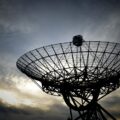An international team of physicists says it has discovered a new way to measure time, in a research effort that led to the creation of a kind of “quantum watch.”
The research, carried out by physicists Marta Berholts, Ronny Knut, Robert Stefanuik, Hampus Wikmark, Susmita Saha, and Johan Söderström, explored the unique dynamics present within groups of localized waves, or “wave packets,” produced in Helium from what are known as Rydberg states. Such states result from electrically excited particles nearing the point of ionization, which the research team achieved using lasers.
“A quantitative agreement is found between theory and time-resolved photoelectron spectroscopy experiments,” the team wrote, who says they were able to demonstrate that unraveling the complex behaviors of these wave packets can not only help to shed light on various quantum “defects,” but more broadly, can also be used in achieving “artifact-free timekeeping.”
According to a paper outlining the team’s results, the individual wave packets they observed create their own unique “fingerprint” due to the photoionization they undergo, each of which is uniquely time-dependent.
“These fingerprints determine how much time has passed since the wave packet was formed,” the study’s authors say, “and provide an assurance that the measured time is correct.” The researchers have likened the resulting unique method of timekeeping to being a quantum watch.
“Since high-level Rydberg states can reach lifetimes of well above microseconds, the [quasiunique beat signatures] can be used as an artifact-free watch over a broad time range with an accuracy in the range of femtoseconds,” the researchers write.
Unlike conventional timekeeping devices, the research team says their quantum watch is fully mechanical and requires no components such as counters used in normal clocks.
“The quantum watch has the potential to become an invaluable tool in pump-probe spectroscopy due to its simplicity,” the team writes, adding that the “assurance of accuracy, and ability to provide an absolute timestamp,” also help to make their new method of time measurement useful in a variety of different applications.
The team published its findings in the journal Physical Review Research.

